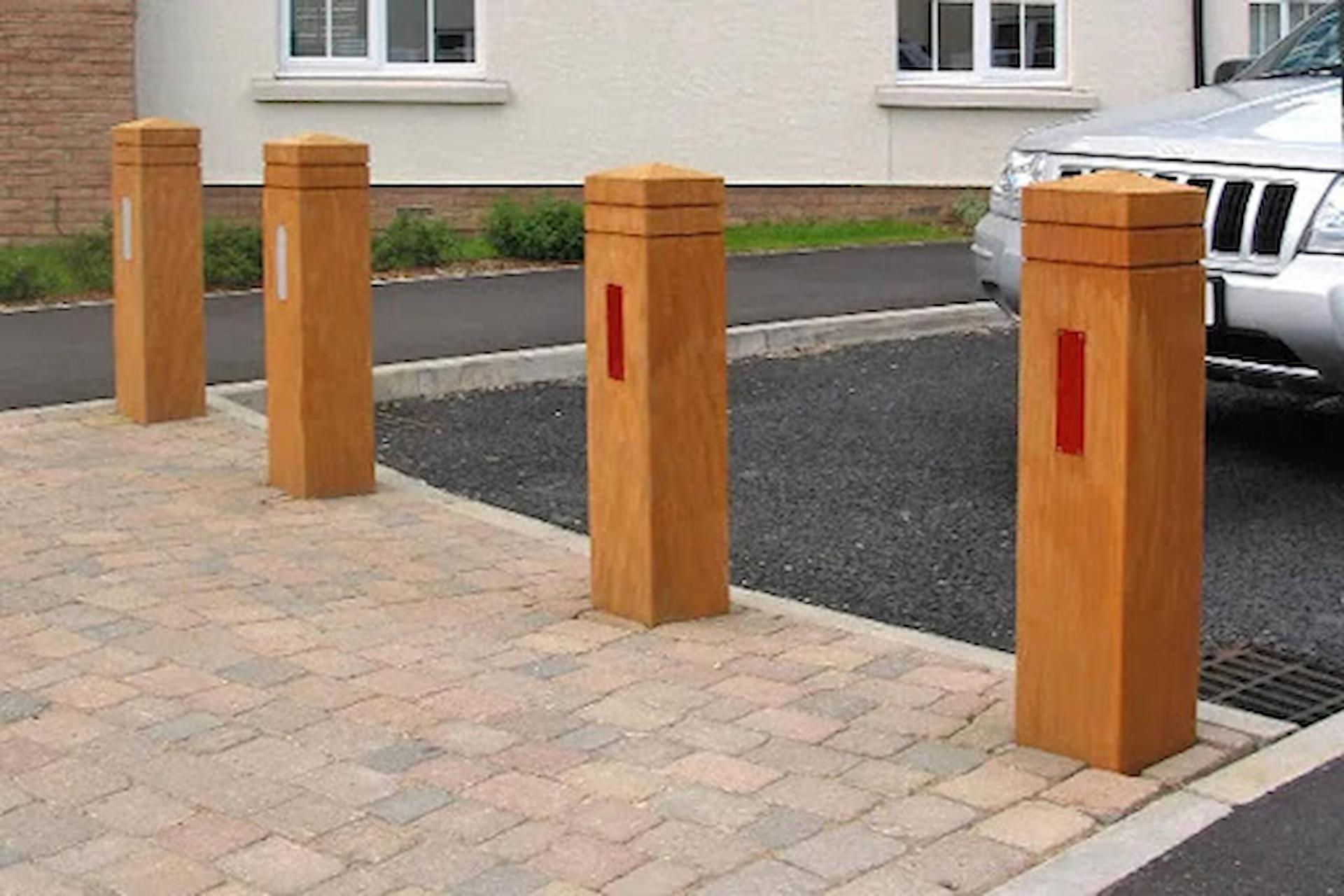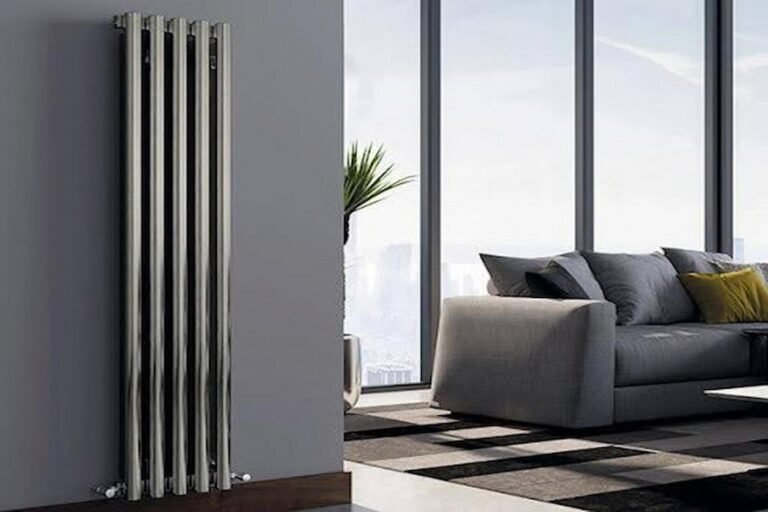Looking for an eco-friendly and stylish way to enhance outdoor spaces? Wooden bollards offer durability, safety, and aesthetic appeal. Discover their benefits now!
Outdoor spaces need protection, organisation, and style. Wooden bollards, whether in parks, streets, or commercial areas, are an eco-friendly, durable, and visually appealing solution. Unlike metal or concrete alternatives, wooden bollards blend naturally with the environment while ensuring safety and guidance.
This article will explore the benefits, types, installation, and maintenance of wooden bollards and explain why they are an excellent choice for businesses, municipalities, and homeowners looking for a sustainable outdoor solution.
What Are Wooden Bollards?
Wooden bollards are sturdy posts made from natural wood. They are installed outdoors to create boundaries, enhance safety, and improve aesthetics. Wooden bollards are commonly used in parks, pathways, driveways, and commercial spaces to guide traffic, protect pedestrians, and enhance the overall landscape design. Their natural appearance blends seamlessly with outdoor environments, making them a popular choice for both functional and decorative purposes.
Key Features:
- Material: Commonly made from oak, teak, or treated softwoods.
- Durability: Resistant to weather, decay, and pests when adequately treated.
- Eco-Friendly: Sustainable and biodegradable, reducing environmental impact.
- Versatile: Available in different shapes, sizes, and finishes to suit various applications.
Wooden bollards offer a natural and elegant alternative to metal or concrete bollards. They are commonly used to prevent unauthorised vehicle access, protect pedestrians, and define landscapes.
Why Choose Wooden Bollards Over Other Materials?
Many materials are available for bollards, including metal, concrete, and plastic. However, wooden bollards stand out due to their unique advantages.
Advantages of Wooden Bollards:
Aesthetic Appeal—Wood blends seamlessly with its natural surroundings, making it ideal for parks, gardens, and historical sites.
Eco-Friendly Choice – Wood is a renewable and biodegradable material, unlike concrete and metal.
Cost-Effective – Wooden bollards are often more affordable to produce and install than metal alternatives.
Customisable – They can be carved, stained, or painted to match specific design needs.
Low Maintenance – Treated wood resists weather damage, requiring minimal upkeep.
While concrete and metal bollards may offer extreme durability, they often look industrial and disrupt natural landscapes. Wooden bollards, on the other hand, provide functionality without compromising beauty.
Different Types of Wooden Bollards
Wooden bollards come in various styles, each designed for specific applications. Choosing the right type depends on the location, purpose, and design preferences.
1. Fixed Wooden Bollards
- Permanently installed into the ground.
- Ideal for pedestrian pathways, parking lots, and restricted areas.
- Provide long-term durability and security.
2. Removable Wooden Bollards
- It can be taken out when needed, offering flexibility.
- Used in event spaces, temporary parking areas, and emergency access points.
- Lockable versions are available for added security.
3. Decorative Wooden Bollards
- Designed with carved patterns, unique shapes, or painted finishes.
- Enhance the aesthetics of historical sites, gardens, and resorts.
- Customisable to match urban or rural themes.
4. Illuminated Wooden Bollards
- Integrated with LED lights for enhanced visibility at night.
- Improve pedestrian safety and create an inviting atmosphere.
- Commonly used in walkways, parks, and commercial districts.
- Each type of wooden bollard serves a distinct purpose while maintaining a stylish and natural look.
Installation Process of Wooden Bollards
Installing wooden bollards correctly ensures their longevity and effectiveness. The process varies depending on the type of bollard and the installation surface.
Step-by-Step Installation Guide:
- Choose the Right Location – Mark where each bollard will be installed to ensure proper spacing.
- Dig the Holes – Dig holes at least 50-70 cm deep for stability for fixed bollards.
- Secure the Bollard – Place it in the hole and ensure it is upright.
- Use Concrete or Compact Soil – Pour concrete or tightly pack soil around the base to keep the bollard firm.
- Allow Time to Set – If using concrete, let it cure for 24-48 hours before applying weight or pressure.
For removable bollards, use an underground sleeve system for easy removal. Proper installation prevents leaning, shifting, or early wear.
Maintaining Wooden Bollards for Long-Lasting Performance
Regular maintenance enhances the durability and appearance of wooden bollards. Since wood is a natural material, it requires some care to withstand weather conditions.
Essential Maintenance Tips:
Apply Wood Preservatives – Protect against moisture, termites, and rot by treating the wood annually.
Repaint or Stain Periodically – Helps maintain colour and prevent surface damage.
Check for Cracks or Splitting – Inspect bollards every few months to identify early Clean Dirt and Debris – Use a damp cloth or mild soap to keep the surface clean.
Replace Damaged Bollards – If a bollard is severely cracked or decayed, replace it to maintain functionality.
Wooden bollards can last 10-20 years or more with proper care, making them a worthwhile investment.
Where to Use Wooden Bollards?
Wooden bollards are suitable for a wide range of outdoor settings. Their versatility makes them ideal for both public and private spaces.
Best Applications:
Parks and Nature Trails – Prevents vehicles from entering pedestrian-only areas while blending with the environment.
Urban Streetscapes – Adds warmth to city designs while enhancing pedestrian safety.
Historical and Cultural Sites – Preserve the authenticity of traditional landscapes.
Parking Areas – Guides vehicles and prevents unauthorised access.
Residential Driveways and Gardens – Enhances curb appeal while defining spaces.
Wooden bollards can be used by property owners, architects, and city planners to create safe, stylish, and environmentally friendly spaces.
Final Thoughts
Wooden bollards are a practical and attractive solution for outdoor spaces. They offer durability, eco-friendliness, and design flexibility, making them a superior alternative to metal or concrete bollards. Wooden bollards provide function and beauty for urban landscapes, parks, or private properties.
Wooden bollards are the perfect choice if you’re looking for a sustainable and stylish way to enhance outdoor spaces. They can be enjoyed for many years by selecting the right type, ensuring proper installation, and regularly maintaining them.




